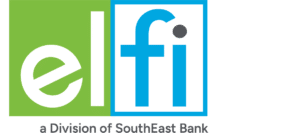It’s no secret that medical school debt can be staggering. According to the Association of American Medical Colleges (AAMC), 73% of medical school students graduate with debt. Worse, the median amount of student loan debt per borrower topped $200,000.
Even though medical school graduates can command high salaries — the median salary was $208,000 in 2021 — it can take years to start earning that much, and student loan payments can eat up a significant portion of your income in the meantime.
If you are interested in paying off medical school debt as quickly as possible, the key is understanding all of your options.
How to pay off medical school debt
Whether you have federal or private student loans (or a mixture of both), your debt may be overwhelming. However, you can tackle your loans, get rid of your debt faster, and save a substantial amount of money with these tips:
1. Make payments during your residency
After medical school, you’ll typically enter a residency program. Residencies last for several years and give you on-the-job training under the supervision of licensed physicians.
During your residency, you will earn a salary. The American Medical Association reported that residents make $60,000 per year on average.
Although that amount is lower than what you’d earn as a licensed physician, it can still give you a livable income. And if you can make payments on your student loans during your residency instead of deferring them, you can cut down on interest charges and save money.
2. Take advantage of tax deductions
With the student loan interest tax deduction, you can deduct up to $2,500 in student loan interest or the actual amount of interest you paid, whichever is less. The student loan interest tax deduction is an above-the-line deduction, so you can claim it even if you don’t itemize your deductions.
You likely won’t qualify for the student loan interest tax deduction once you begin working full-time as a physician, but during your residency, you might. You can claim the full value of the deduction as long as your modified adjusted gross income (MAGI) is below $70,000 ($140,000 if married filing jointly). You may be able to claim a reduced amount if your income is $70,000 to $85,000 ($140,000 to $170,000 if married filing jointly), and you’re ineligible for the deduction if your MAGI is over $85,000 ($170,000 if married filing jointly).
The 2 Best Companies to Refinance Student Loans
Our Top-Rated Picks for 2024 Offer Low Rates and No Fees

3. Enroll in automatic payments
Most lenders offer a 0.25% interest rate reduction if you enroll in automatic payments. That may sound small, but consider this example:
Jeff has $200,000 in student loans at 5.0% interest and a 10-year loan term. He enrolled in automatic payments right away and qualified for an autopay discount, reducing his rate to 4.75%. Thanks to the automatic payment discount, Jeff would save over $2,900 over the life of his loans.
4. Explore loan forgiveness
As a doctor, you may decide to work for a non-profit hospital, health clinic, or government agency. If that’s the case and you have federal student loans, you may be eligible for Public Service Loan Forgiveness (PSLF). Through PSLF, the government will discharge your federal loans if you work for a qualifying employer for 10 years while making 120 monthly payments under a qualifying payment plan.
Loans forgiven through PSLF aren’t taxable as income, so loan forgiveness can provide you with significant relief.
5. Utilize income-driven repayment plans
Federal loan borrowers who can’t afford their payments can lower them by enrolling in an income-driven repayment (IDR) plan. Your monthly payments are calculated as a percentage of your discretionary income, and if you make your payments for 20 or 25 years (the repayment term varies depending on the plan), your remaining balance may be forgiven.
There is a provision in place that makes loans discharged through IDR plan forgiveness excluded from federal income taxes, but that provision is currently scheduled to expire in 2025. Although it could be extended, there is a chance that it won’t be, and any loans that are discharged will be considered taxable income.
Talk to a tax professional to discuss the potential tax implications if you plan on pursuing loan forgiveness through an IDR plan.
6. Look for signing bonuses
Signing bonuses for physicians are common, and they can be lucrative.
According to Merritt Hawkins, a physician search firm, The average signing bonus for a physician was $32,692. If you use your signing bonus to make a lump sum payment against your student loans, you can save a substantial amount of money.
For example, Jeff received a $30,000 signing bonus. He applied it to his $200,000 of student loans with a 4.75% interest rate and a 10-year repayment term. Thanks to his lump sum payments, he will save over $18,000 in interest charges and will pay off his loans two years sooner.
7. Consider moonlighting or side gigs
As a medical school graduate, creating additional streams of income can be a great way to pay off your student loans faster.
● Moonlighting: One of the most common ways to earn extra money is through moonlighting. If you’re not familiar with the term, moonlighting is when physicians work additional shifts, either for their current employer or another healthcare facility. Your primary employer may have limits on how many hours you can work per week or month, but moonlighting can be lucrative. According to the Student Doctor Network, you can earn $100 to $200 per hour. You can find potential moonlighting opportunities on Moonlighting.org.
● Side gigs: If you don’t want to spend more time working in a hospital, another option is to take on other side gigs. Medical school graduates may find they can earn significant amounts of money by tutoring premed students, for example, through the Princeton Review or MedSchoolTutors.
By earning more money, you can make additional payments toward your student loans. Here’s how additional payments would affect a borrower’s repayment cost with $200,000 in student loans at 5.00% interest and a 10-year term:
| Minimum Monthly Payment | Additional $100 Per Month | Additional $500 Per Month | Additional $1,000 Per Month |
Payment Amount | $2,121 | $2,221 | $2,521 | $3,121 |
Time in Repayment | 10 Years | 9 Years 6 Months | 7 Years 9 Months | 6 Years 3 Months |
Total Repayment Cost | $254,562 | $251,229 | $241,200 | $233,153 |
Total Savings |
| $3,333 | $13,362 | $21,409 |
To find out how extra payments can affect your repayment cost, use the student loan payoff calculator.
See How Much You Can Save
Student Loan Payoff Calculator
View Details
Collapse
Check how long it will take you to pay off your student loans. Quickly see the effects of lower rates, extra payments, and different terms on your repayment plan.
Results
| Current Payment | w/ extra payment | Difference | |
|---|---|---|---|
| Term | 10 years | — | — |
| Payoff Date | — | — | |
| Total Interest | $16,560 | — | — |
Want to lower your rate to help pay off student loans faster? Check your rate at our top-rated lenders in 2 minutes, with no impact on credit.
8. Research loan repayment assistance programs in your area
Depending on your practice and your location, you may be eligible for national or state loan repayment assistance programs. These programs will give you money to pay off some or all of your medical school student loans. In exchange, you’re required to work in high-need areas for a specific amount of time, such as one to three years. For example:
● National Health Service Corps (NHSC) Loan Repayment Program: The NHSC loan repayment program provides loan repayment assistance to licensed primary care clinicians in eligible disciplines that make two-year service commitments. Qualifying physicians can get up to $50,000 for the two-year service term to repay their student loans, and you can extend your contract for additional repayment assistance.
● Arizona: The Arizona Department of Health Services operates a loan repayment program that provides up to $65,000 in student loan repayment assistance for physicians and dentists that make two-year service commitments to work in facilities located in health professional shortage areas.
● Washington, D.C.: The DC Health Professional Loan Repayment program encourages physicians to work full-time for facilities in health professional shortage and medically underserved areas. Qualifying healthcare providers can get up to $151,849 in loan repayment assistance if they commit to a four-year service term.
To find other programs you may be eligible for, you can search the AAMC database or your state education agency.
9. Refinance some (or all) of your student loans
As a medical school graduate, you’re a prime candidate for student loan refinancing. You likely have a higher-than-average income, so you have a better chance of qualifying for a loan and securing a lower interest rate than you have now on your existing student loans.
When you refinance, you combine some or all of your existing student loans into a new loan. You can change your loan terms, such as qualifying for a lower rate, switching from a variable rate loan to a fixed rate loan, or even change your repayment term to get a lower payment.
Medical school graduates usually focus on getting the lowest possible interest rate to help them save money and get out of debt faster. The savings can be significant.
For example, Jeff refinanced his $200,000 of student loans. He wants to get rid of his debt as soon as possible, so he chose a 7-year loan term at 3.5% interest. Not only would Jeff eliminate his debt three years earlier than originally scheduled, but he’d also save over $28,000.
| Original Loan | Refinanced Loan |
Loan Term | 10 Years | 7 Years |
Monthly Payment | $2,121 | $2,688 |
Total Interest | $54,562 | $25,792 |
Total Repayment Cost | $254,562 | $225,792 |
Overall Savings |
| $28,770 |
Keep in mind that refinancing has some drawbacks. If you have federal loans, they’ll become private debt, and they’ll no longer be eligible for federal benefits. Some borrowers opt to refinance only their private loans, or they may refinance only the federal loans with the highest interest rates, such as Grad Plus Loans.
Paying off medical school debt
Now that you’ve learned how to pay off medical school student loans, you can come up with a strategy for managing your debt. Combining a few of the tips we’ve outlined in this article, such as refinancing medical school loans, repayment assistance programs, and moonlighting, should help you pay off your loans faster and save a lot of money.
If you’re ready to start the student loan refinancing process, you can use Purefy’s Compare Rates tool to get quotes from top refinancing lenders without affecting your credit score.
Interested in Student Loan Refinancing? Compare rates from top-rated lenders and see how much you could save.
Checking your rates takes 2 minutes and has no impact on credit.


















